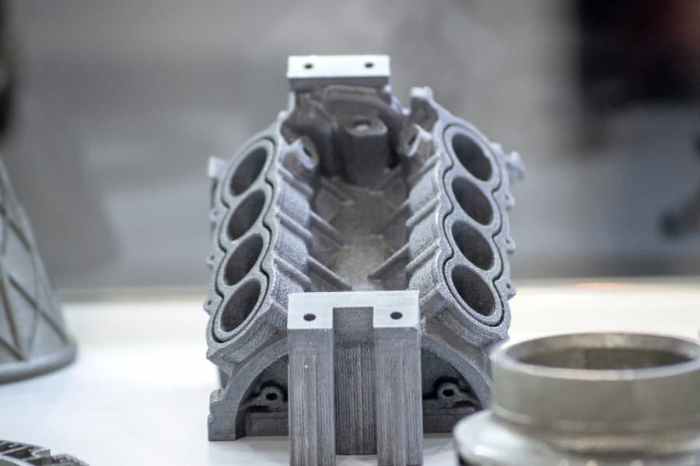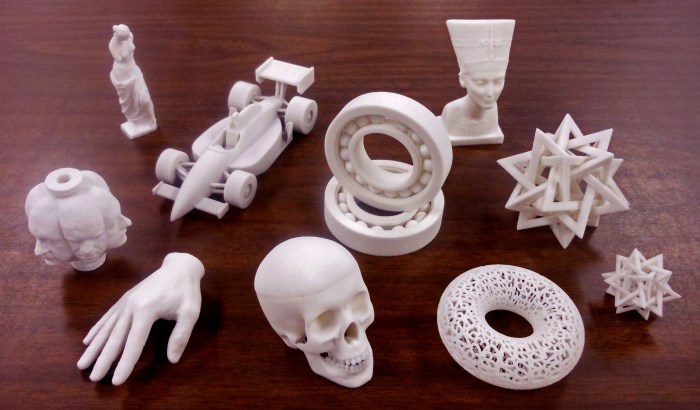
3D Printing is transforming the way we create, manufacture, and innovate across various industries. From job creation to revolutionary business models, it’s reshaping the workforce and opening up exciting new career paths. This technology not only streamlines manufacturing processes but also allows startups to bring their ideas to life with unprecedented efficiency and creativity, making it a hot topic in both the tech and business worlds.
As we dive deeper into the impact of 3D printing, we’ll explore its role in employment, how it’s changing industrial goods and services, and the unique opportunities it presents for entrepreneurs. Get ready to discover how this dynamic technology is not just a trend but a significant force driving change in the global economy.
3D Printing in Employment and Work
The advent of 3D printing technology has significantly transformed the workforce landscape across various industries. As this innovative manufacturing process becomes more mainstream, it has started to create new job opportunities while also altering the nature of existing roles. Understanding the implications of 3D printing on employment is crucial for both job seekers and industry professionals.D printing, also known as additive manufacturing, is reshaping how products are designed and produced.
This technology enables rapid prototyping, customization, and the production of complex geometries that traditional manufacturing methods may not easily replicate. Industries such as aerospace, automotive, healthcare, and consumer goods are leveraging 3D printing, which in turn generates a plethora of job opportunities ranging from design to production.
Impact of 3D Printing on Job Creation
As 3D printing gains traction, it continues to drive job creation in various sectors. Its impact can be seen in several ways:
- Aerospace and Defense: Companies in these sectors employ additive manufacturing for lightweight components, resulting in roles for engineers specializing in materials and process optimization.
- Healthcare: The medical field utilizes 3D printing for custom implants and prosthetics, leading to job openings for biomedical engineers and technicians.
- Consumer Goods: Businesses are increasingly using 3D printing for rapid prototyping, which opens positions for designers and product developers who can translate concepts into tangible items.
- Education and Research: Academic institutions are incorporating 3D printing into curricula, generating teaching and research positions focused on this technology and its applications.
Skills Required for Employment in the 3D Printing Industry
To thrive in the 3D printing industry, professionals need to possess a unique set of skills that bridge both technical and creative domains. Key competencies include:
- 3D Modeling Software Proficiency: Familiarity with software such as AutoCAD, SolidWorks, or Blender is essential for designing objects for 3D printing.
- Material Science Knowledge: Understanding the properties of various materials used in 3D printing is crucial for selecting the right material for specific applications.
- Engineering Principles: A strong foundation in engineering concepts is necessary to navigate the design and production processes effectively.
- Problem-Solving Skills: The ability to troubleshoot issues that arise during printing, such as layer adhesion failures or machine malfunctions, is vital for success in this field.
Potential Career Paths Related to 3D Printing Technologies
The growing adoption of 3D printing has led to the emergence of various career paths. Here are several noteworthy options:
- Additive Manufacturing Engineer: This role involves overseeing the production process and optimizing designs for 3D printing.
- Product Designer: Designers create and refine products specifically tailored for 3D printing, focusing on both function and aesthetics.
- 3D Printing Technician: Technicians operate and maintain 3D printers, ensuring that machines are functioning correctly and output is of high quality.
- Applications Engineer: This position involves working closely with clients to determine the best 3D printing solutions for their needs.
3D Printing in Industrial Goods and Services

D printing, also known as additive manufacturing, is transforming the landscape of industrial goods and services. As industries seek greater efficiency, flexibility, and innovation, the integration of 3D printing technologies into manufacturing processes has become increasingly prevalent. This method allows for the creation of complex geometries and custom parts that traditional manufacturing methods may struggle to achieve.
Applications of 3D Printing in Manufacturing Processes
D printing is utilized across various sectors in manufacturing, enabling quicker production runs and the possibility of custom designs. Key applications include:
- Rapid Prototyping: 3D printing accelerates the prototyping phase, allowing designers to quickly iterate on designs and test their functionality without the long lead times associated with traditional methods.
- Tooling: The production of jigs, fixtures, and molds can be streamlined using 3D printing, which reduces material waste and decreases manufacturing costs.
- End-Use Parts: Industries such as aerospace and automotive leverage 3D printing for producing lightweight, complex parts that enhance performance and efficiency.
- Customization: 3D printing enables tailored solutions, such as personalized medical implants or custom automotive parts, catering to specific customer needs.
Comparison of Traditional Manufacturing Methods and 3D Printing
When comparing traditional manufacturing methods to 3D printing, distinct differences in processes, costs, and capabilities arise. Traditional manufacturing often relies on subtractive methods, where material is removed from a solid block to create parts. In contrast, 3D printing adds material layer by layer, allowing for more intricate designs. Here are some critical points of comparison:
| Aspect | Traditional Manufacturing | 3D Printing |
|---|---|---|
| Material Waste | High waste due to cutting and machining excess material. | Minimal waste as material is added only where needed. |
| Setup Time | Long setup times for tooling and machining. | Quick setup with no tooling required. |
| Design Complexity | Limited by manufacturing capabilities and tooling. | Unlimited design possibilities with complex geometries. |
| Production Volume | Best suited for high-volume production runs. | Ideal for low-volume and customized production. |
Advantages of Using 3D Printing for Industrial Prototypes
D printing brings several advantages to the prototyping stage in industrial manufacturing. The key benefits include:
- Speed: Prototypes can be produced in a matter of hours or days, significantly shortening the time from concept to testing.
- Cost-Effectiveness: Reduces costs associated with materials and labor by eliminating the need for complex tooling.
- Design Freedom: Encourages creativity and innovation by enabling designs that would be impractical or impossible with traditional methods.
- Feedback and Iteration: Rapid prototyping allows for quick adjustments based on user feedback, enhancing the final product’s quality.
“The future of manufacturing lies in the ability to produce customized solutions efficiently through advanced technologies like 3D printing.”
3D Printing in Business Creation and Development
D printing is revolutionizing the landscape of business creation and development, offering startups and established companies alike a unique opportunity to innovate their product offerings. The technology facilitates rapid prototyping, reduces production costs, and encourages creativity, enabling entrepreneurs to bring their ideas to market more efficiently than ever before.
Startups can leverage 3D printing for product development by utilizing its capabilities to create custom and complex designs that traditional manufacturing methods may not allow. This flexibility not only aids in faster iterations during the design phase but also allows for low-volume production runs without the need for costly molds or tooling. Startups can experiment with different materials and designs, leading to innovative products that meet specific customer needs.
Innovative Business Models Emerging from 3D Printing
The rise of 3D printing technologies has given birth to several innovative business models that challenge traditional manufacturing and retail paradigms. Companies are now able to operate on-demand production models, where items are created only when there is a confirmed order, reducing excess inventory and waste. Here are a few noteworthy business models:
- Mass Customization: Businesses can offer highly personalized products tailored to individual customer preferences, such as custom-fit clothing or personalized gadgets.
- Direct-to-Consumer (DTC) Sales: Companies can sell 3D printed products directly to consumers online, bypassing traditional retail channels and reducing costs.
- Subscription Services: Some companies offer subscription models for 3D printed goods, where customers receive new, custom items regularly, keeping the product line fresh and engaging.
- On-Demand Manufacturing: Businesses can fulfill orders as they come in, minimizing the need for inventory storage and allowing rapid responses to market demands.
The impact of 3D printing extends to various sectors, resulting in companies transforming their operations and product offerings. Here’s a list of successful companies utilizing 3D printing in their operations, showcasing the diversity of applications across industries:
- Shapeways: A platform that allows users to create and sell their 3D printed designs, empowering artists and entrepreneurs.
- Stratasys: A leading manufacturer of 3D printers that provides solutions for various industries, including healthcare and aerospace.
- Formlabs: Known for its high-resolution 3D printers, Formlabs focuses on professional-grade printing for dental and engineering applications.
- Materialise: A pioneer in 3D printing software and services, providing solutions for 3D printing in medical and industrial sectors.
- Protolabs: Offers rapid prototyping and low-volume production services, utilizing 3D printing to expedite product development processes.
The integration of 3D printing into business models not only enhances product development processes but also fosters a culture of innovation, allowing companies to stay competitive in a fast-paced market.
Concluding Remarks

In summary, 3D printing stands at the forefront of a technological revolution, bridging gaps between industries and creating opportunities for both seasoned professionals and aspiring entrepreneurs. As we’ve seen, its influence reaches far beyond mere manufacturing; it’s a catalyst for innovation and job growth, paving the way for a future where creativity and efficiency go hand in hand. Embracing this technology could very well position individuals and businesses at the leading edge of their fields.
Question & Answer Hub
What materials can be used in 3D printing?
3D printing can use a variety of materials including plastics, metals, ceramics, and even bio-materials depending on the technology employed.
How long does it take to 3D print an object?
The time it takes to print an object can vary widely based on its size and complexity, ranging from a few minutes to several hours.
Is 3D printing expensive?
The cost of 3D printing varies based on the materials used, the type of printer, and the scale of production, but it often reduces costs compared to traditional manufacturing for small batches.
What industries benefit the most from 3D printing?
Industries such as aerospace, healthcare, automotive, and consumer goods are significantly benefiting from the flexibility and efficiency offered by 3D printing.
Can 3D printing create functional products?
Yes, 3D printing can produce functional products, prototypes, and even end-use parts that meet specific performance requirements.





